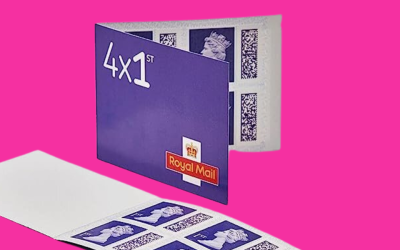[cs_content][cs_section parallax=”false” style=”margin: 0px;padding: 45px 0px;”][cs_row inner_container=”true” marginless_columns=”false” style=”margin: 0px auto;padding: 0px;”][cs_column fade=”false” fade_animation=”in” fade_animation_offset=”45px” fade_duration=”750″ type=”1/1″ style=”padding: 0px;”][cs_text]There’s no denying that we live in a digitally driven world. New technologies and online services are constantly being developed, making it almost difficult to keep up! But do these new forms of communication mean that traditional methods like direct mail are no longer of value to brands and their customers? Let’s take a closer look…
[/cs_text][x_custom_headline level=”h2″ looks_like=”h4″ accent=”false”]Are emails replacing real mail?[/x_custom_headline][cs_text]Ofcom recently published their Communications Report, which provides an in depth look at the entire sector and covers all mediums from TV and radio to smartphones, the Internet and post.
One of the key findings from the report was that letter revenues have increased slightly by 0.4% in 2014; however the number of letters being sent has actually fallen by 1.5%. One of the reasons behind this is that people appear to be replacing letters with email. This was particularly true of younger demographics, with 77% of respondents aged 16-24 saying they send emails, rather than letters. This age group are also keen users of other electronic communications.
Whilst you would be quick to assume that the falling number of letters being sent isn’t a great sign for direct mail users, it actually has the potential to be advantageous. If less mail is being sent, the mail that is received is more likely to be noticed and people still appear to value their post, as we will go onto discuss later in this article.
[/cs_text][x_custom_headline level=”h2″ looks_like=”h4″ accent=”false”]Smartphones are taking over[/x_custom_headline][cs_text]In past Communications Reports by Ofcom, respondents had cited their laptops as being their most important device for connecting to the Internet, however this year there was a different outcome. Smartphones were found to be people’s most important device for connecting to the Internet, with 43% of respondents citing the device, compared to just 26% citing their laptop.
When asked which device they would miss the most if taken away, the majority of 16-24 year olds said their smartphone; showing just how integral it is to their lives. This is something marketers need to keep in mind, in order to achieve the best results from their campaigns.
48% of respondents to Ofcom’s survey claimed to be very hooked to their mobile devices. They were asked to rate how hooked they were out of ten (with ten being completely hooked) and the average was found to be seven, showing high levels of attachment. Not surprisingly, the level of attachment declined with age, with 61% of smartphone users aged 16-24 -saying they were very hooked, compared to just 32% of those aged 55 and over.
There’s no denying that mobile has an important role to play in the world of communications and marketing. It is the device people rely on the most and something they struggle to function without. For marketers it is a prime target and even those using direct mail can find a way to integrate it into their strategies, as we will explain later.
[/cs_text][x_custom_headline level=”h2″ looks_like=”h4″ accent=”false”]More people are using social media[/x_custom_headline][cs_text]More than seven in ten people now have social media profiles. The highest number of social media users fell into the 16-24 year old category at 93%, followed closely by the 25-34 year old category at 90%. 68% of people aged 45-52 years, 49% of people age 55-64 years and 28% of those aged 65 and over now use social media too.
Whilst Facebook was found to be the social media site that has the highest reach and highest frequency of use, those in the 16-24 age group were also found to be keen users of other sites like Twitter, YouTube, Instagram, Snapchat and Vine.
A fifth of all UK adults say they are now hooked on social media, making it a crucial element to integrate into your marketing strategy.
[/cs_text][x_custom_headline level=”h2″ looks_like=”h4″ accent=”false”]Going back to smartphones…[/x_custom_headline][cs_text]The Ofcom Communications Report found that eight in ten households now have fixed broadband access, however more interestingly it found that 66% of people use their smartphones to surf the web at home. The average amount of time people spend online is also much higher for smartphones than it is for desktop and laptop.
Today, more and more people are shopping online using their smartphone devices. Ofcom found that mobiles are currently being used to make 26% of all purchases, which works out to be around 1 in 4. This year, 62% of UK adults have already used their smartphones to buy products and services online.
Other common uses of smartphones include general browsing, sending and receiving emails, visiting social media websites and watching online video content on websites like YouTube.
[/cs_text][x_custom_headline level=”h2″ looks_like=”h4″ accent=”false”]What’s the state of direct mail?[/x_custom_headline][cs_text]Although it may seem like digital communications like email and devices like smartphones are taking over the world that doesn’t mean that traditional methods of communication like direct mail aren’t still effective. Businesses clearly still see much value in direct mail or they wouldn’t be spending so much money on it.
The Ofcom Communications Report found that 13.9% of businesses’ total advertising budget is currently being allocated to direct mail marketing. Advertising spend on direct mail may have dropped from 15.6bn in 2010 to 12.7bn in 2014, however it’s still a lot of money to be spending and surely businesses wouldn’t be doing it if it didn’t offer a great return?
Out all of the different sectors, retail is currently spending the most on direct mail. The traditional marketing practice accounted for 30.8% of advertising spend in 2014, which was an increase of 5% from the previous year. Whilst some sectors have reduced their spend on direct mail, those that have continued to invest the same or a higher amount include both the services and Government sectors.
[/cs_text][x_custom_headline level=”h2″ looks_like=”h4″ accent=”false”]What does this all mean?[/x_custom_headline][cs_text]Essentially, it means that businesses clearly still feel that there is value in sending our direct mail to their customers and there is also evidence to suggest that customers want to receive the mailings they’re sent. A rather strange yet enlightening finding from the report was that younger adults consider themselves to be reliant on post as a form of communication, more so than older adults! 62% of those in the 16-24 age group and 63% of those in the 35-54 age group claimed to be reliant on post, compared to just 49% of people over the age of 55.
However despite feeling reliant on post as a form of communication, younger adults are currently the least likely age group to receive direct mail. This suggests that perhaps marketers are missing a trick by failing to target younger audiences with direct mail. It’s clearly something they feel is important and of value; perhaps because to them it is more of a rarity than email. Whatever the reason, if you haven’t already, it may be something you want to consider for your next marketing campaign.
[/cs_text][x_custom_headline level=”h2″ looks_like=”h4″ accent=”false”]Making direct mail more relevant in the digital world [/x_custom_headline][cs_text]The fact people are sending fewer letters isn’t enough to say direct mail is dead. You only have to consider how much of businesses’ precious advertising spend is being allocated to direct mail to see that it is still of value in today’s digital world.
However, this isn’t to say that you can get away with sending any old mailing. In order to remain relevant to your audience, you need to find a way to integrate it with some of the other technologies and communication methods outlined in this article.
Take social media, for example. It’s an integral part of people’s lives, so it only seems right that you find a way to utilise it to your advantage. Integrating direct mail with new technologies like QR codes and NFC will allow you to take customers online with your mailing, enhancing their experience in hope of gaining conversions. What’s more, this will be done with you’ve guessed it – their smartphones!
Smartphone technology has a key role to play in your direct mail campaigns. Most people constantly have their devices in arm’s reach, making them the perfect tool for integrating with your direct mail to take customers’ online, whether it’s to your website, social media page or a personalised landing page. Thanks to smartphones, direct mail marketers can also integrate their campaigns with augmented reality technology, which allows them to add a whole new depth to their mailings.
Whilst direct mail still holds a lot of value in the communications world, in order for it to remain truly relevant to today’s consumers, it must be integrated with other technologies and make use of the digital services available.
To discuss aspects of this article and how Baker Goodchild can help with your direct mail requirements call us today on 0800 612 1972.
[/cs_text][/cs_column][/cs_row][/cs_section][/cs_content]






